A night of Post Processing
By Dirk Dom
What a night!
I did ten black and white shots of my San Francisco trip.
At first, I got all crazy about printing big and I wanted drum scans made. Since that, and printing four feet would see me bankrupt, I used my own scans and enjoyed these.
I’ll print 12 x 18 inches, 30 x 45 cm, on Baryta paper. With my own scans I can go to 24 inches, 60 cm at 300 DPI.
This was a night of calm creativity and intense concentration.
Ansel Adams, the greatest printer that ever lived, said: “the negative is the score, the print the performance”. I performed tonight.
I’m deeply grateful I can do this.
The tools I use would make any Photoshop specialist laugh so hard he’d get cramps, but I use them until I can’t make the print any better. I do burning and dodging, a little bit of levels, mainly to check if I reach the black and white limits (ALT key), that’s all. Of course the images need spotting. Photoshop is as refined as you want, no limit.
Usually I have a very vivid idea about the potential of the print and what I want it to become, getting there is usually not difficult but takes lots of time.
Well, here they are, I didn’t include shots of the city because buildings don’t fit in this series.
This one I made very high key to offset the jet black charred stump and the rest of the Redwood forest.
Here I think I got the range of light in the forest.
–
Another jet black stump.
–
The bank of a creek in Ukiah. This shot is so sharp you see every thread of moss on the trees. It screams “Enlarge me BIG!!!”
–
My son.
–
One afternoon, the clouds were just magic in Ukiah. I was out for hours watching it all evolve.
–
Yummy…
–
Finally, I include this city shot, because of the nice sky: San Francisco from Bernal Heights. I think that’s the best view of the city.
–
I’m so glad that last year I decided to go for film and not for digital black and white. There are always beautiful structures in the negative, often totally unexpected.
Like the cloud in the San Francisco shot:
No way you can get such a thing digitally! (Does Nik software emulate this? I’d like to know) Such structures make a print glow. A print shows this sort of detail, to discover and enjoy.
I think there is nothing more beautiful in photography than fine black and white.
Well, enough.
And,
If it doesn’t look good as a thumbnail, it’s no good.
Bye,
Dirk.

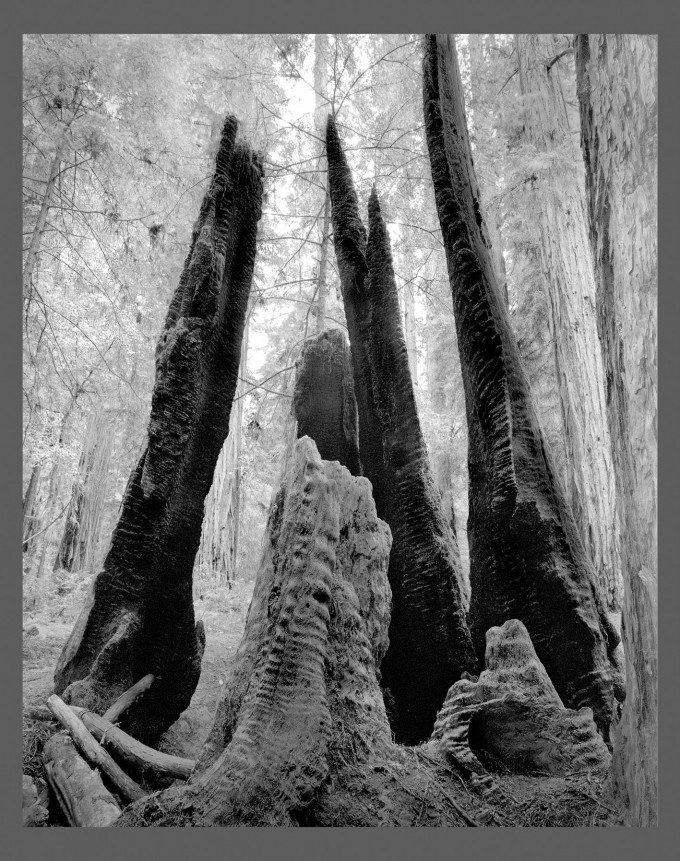
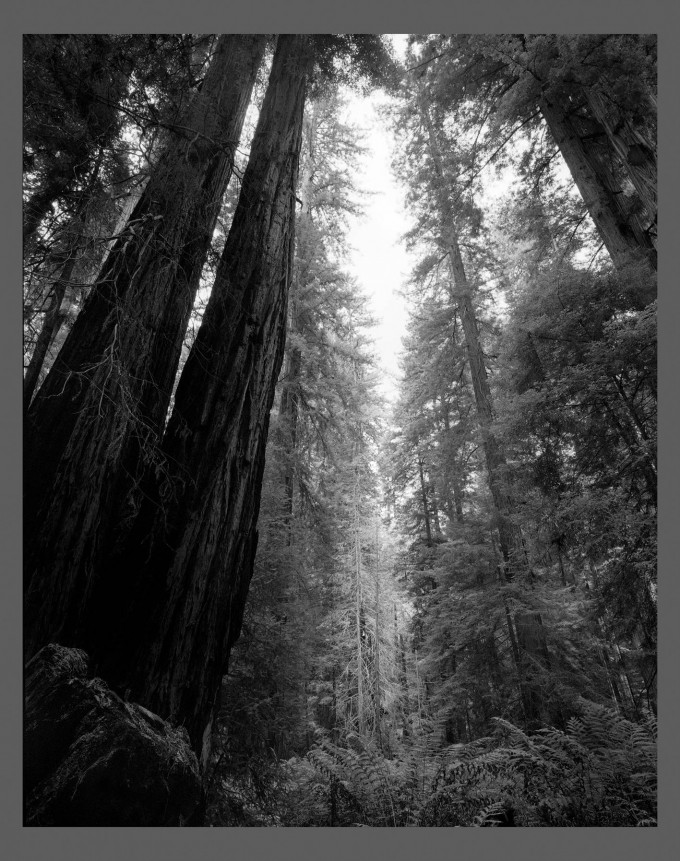
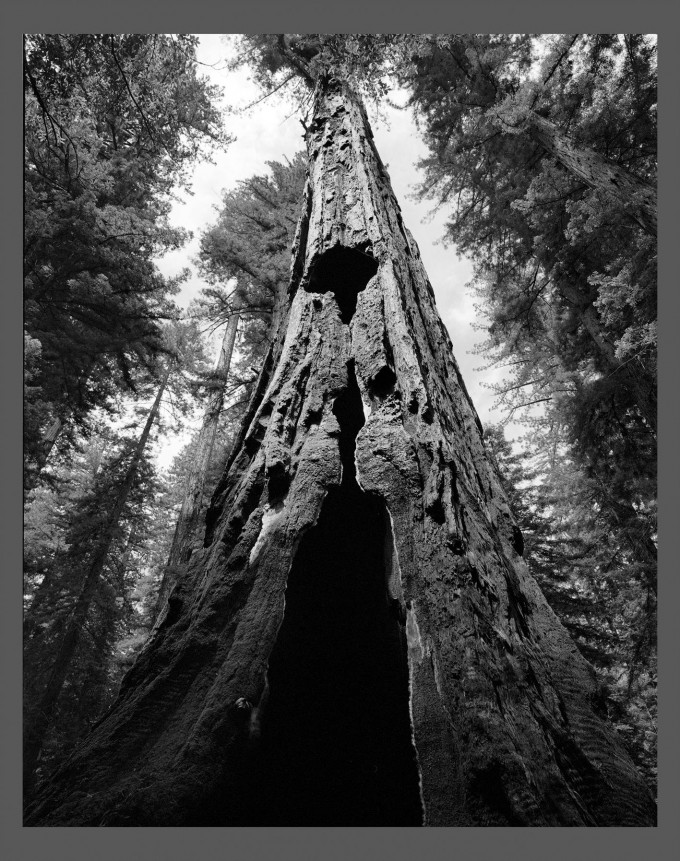
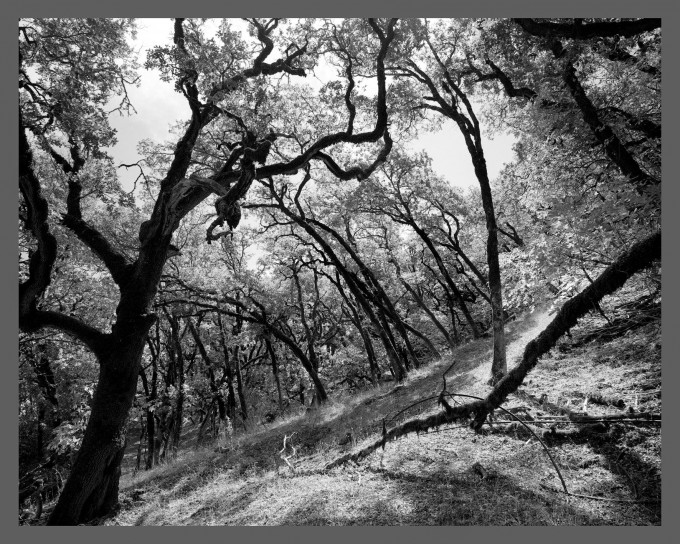
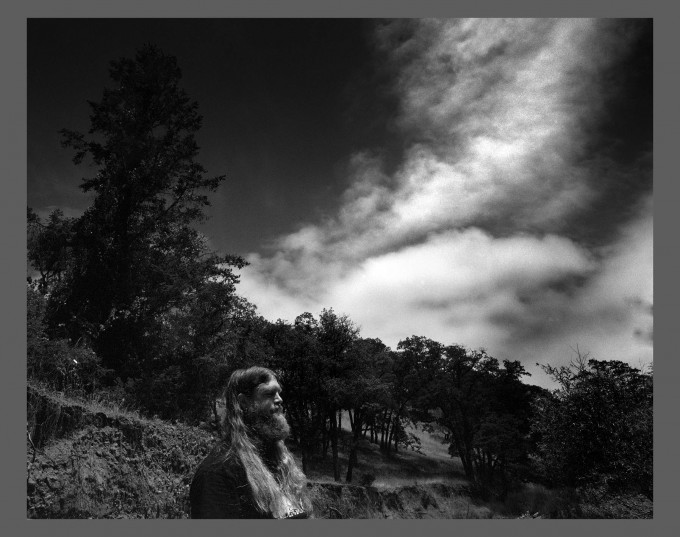
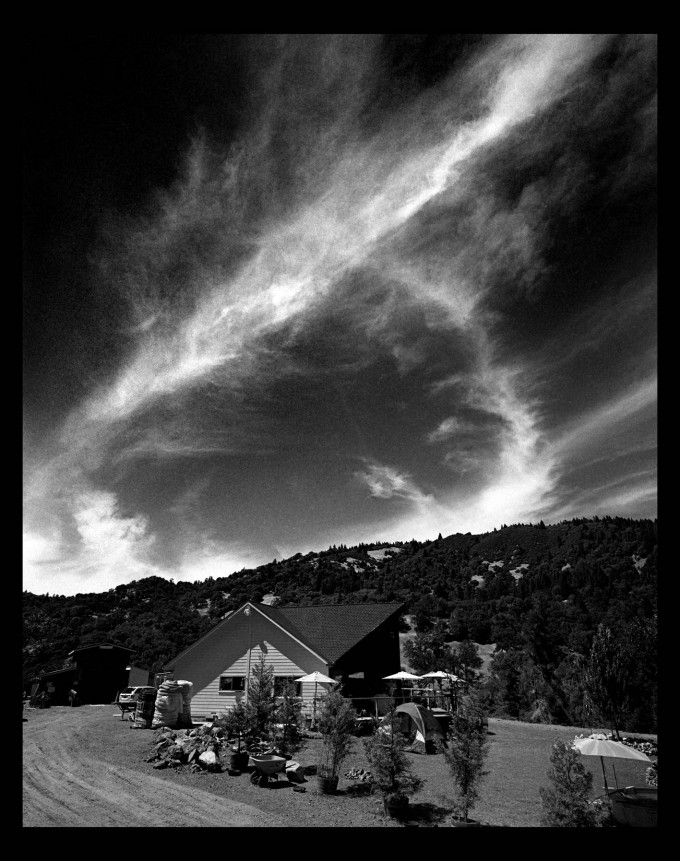
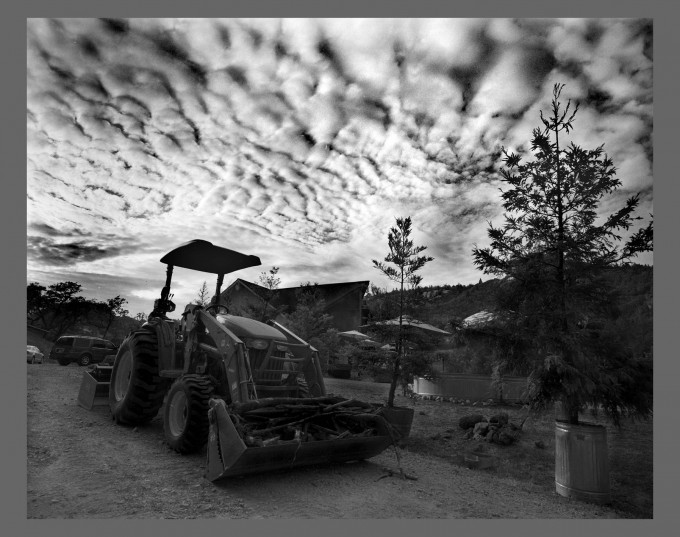
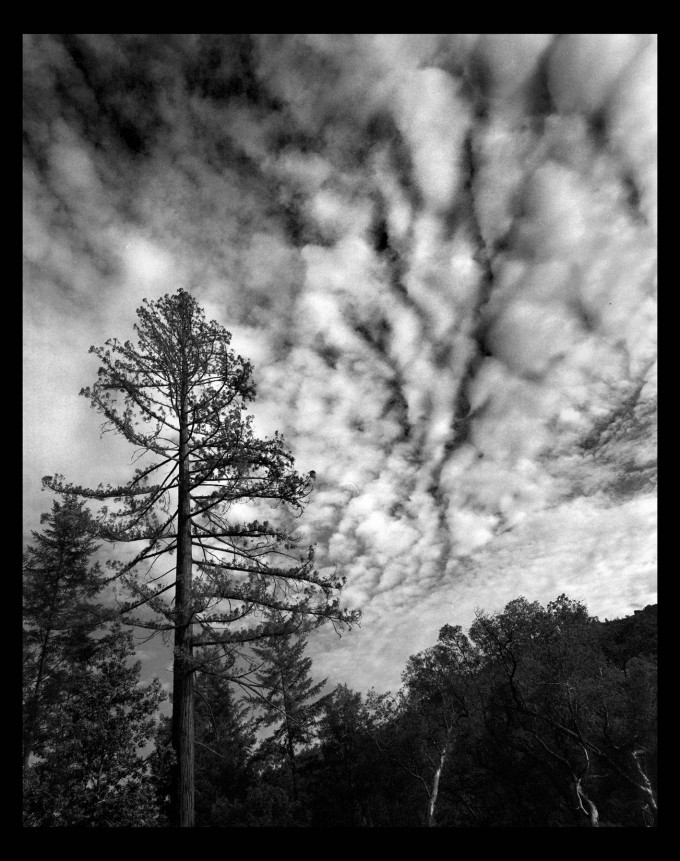
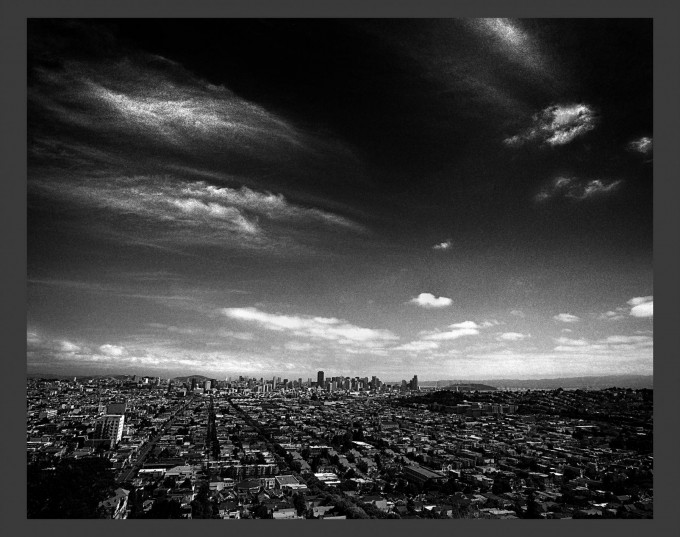
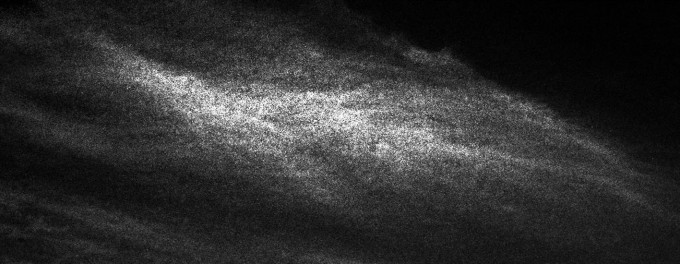



Hi!
Thanks for the nice comments, very much appreciate them.
I wanted to just let the images speak, so i didn’t include tech stuff, I think there’s already so much tech stuff on the Net…
I’m glad i took the film route because, I think, you get more positive, unexpected stuff with it and I like that. That is of course a very personal impression as I’ve never shot digital black and white. My gear is about as expensive as a Leica Monochrom, which I think would yield sharper results. I think dynamic range of black and white neg is bigger and burnout much smoother.
Technical data:
Mamiya 7 with 43mm lens, 56mm x 70mm negative. (I also have a Linhof technikardan 23 technical camera which I also use for B&W only)
Kodak Tmax 400 film pushed for 800 ASA: gives a neg with lots of nice greys which scans perfectly. I do 800 ASA because I want grain. I stick to one film.
Orange filter
Spot metered with Pentax spot meter, shadows underexposed two to three stops, highlights take care of themselves unless they are real important and shadows can get black, then I measure differently. I sort of try to use the zone system, but have trouble with it, insufficient self discipline.
Gitzo (real expensive, $800 but I wouldn’t know what I’d do without it) travel tripod in the forest, (shutter times from 1/60th to 4 seconds) and hand held for the rest
Scanned at 2,400 PPI on Epson V750 flatbed, gives me enough rez for 24 inch print at 300DPI. Scanned 16 bit.
Printed on inhumanely expensive I think 48 inch Canon inkjet printer.with inhumanely expensive pigment inks.
I print on inhumanely expensive Hahnemühle Baryta paper
I don’t print myself, I let it do by a pro who knows what he’s doing. Of course everything is calibrated: my image on my Eizo is 100% the same as the print.
Postprocessing in Photoshop CS6 on 16 bit TIFF’s.
24 inch calibrated Eizo monitor for postprocessing (essential for black and white)
I did lots and lots of very serious wet darkroom work and I personally get much better results in a much easier, more controlled way with this hybrid route, but the hybrid route is ten times as expensive.
You have to realize that to appreciate black and white you have to see prints, looking at it onscreen, except if you have an Eizo and open it in Photoshop, makes little sense. Also different programs on the same monitor yield very different renderings.
Sorry, don’t have a website.
Bye,
Dirk.
I envy people with high skills in printing be it digital hybrid or analogue. Most people’s work ends when they have imported their photos and done some PP on their selected few. I sense this is beginning to change. I hope my suspicions are correct as it must a great sense of achievement seeing your prints coming alive -so to speak.
I love your images in particular the sky scapes -you have no doubt inspired people to try to do their own prints.
Thanks for posting.
Great shots! What camera, lens?
You capture the awsome depth of Black and White.
Brand of paper and which printer. I’m using Epson P600. MOAB AND Brilliant silver luster.
Bob in Aurora.
Darkroom envy. Nothing wrong with film, nothing wrong with digital, nothing wrong with hybrid. Those shots look fantastic! Well done.
I always found combining film black and white capture with digital post produced excellent results. Because of the negative capture, it’s almost impossible to blow out highlights and so much of that is retained in a good scan that the highlight falloff ends up being linear and the detail is awesome. Labor intensive but the results are so satisfying, especially as a print.
I’m confused. Film good, digital bad? Where’s the darkroom performance?
Lovely work, Dirk. What kind of film were you shooting? Do you develop it yourself or send it out?
A++
Thanks for your post, will appreciate your sharing Camera / Lens / Film etc details…